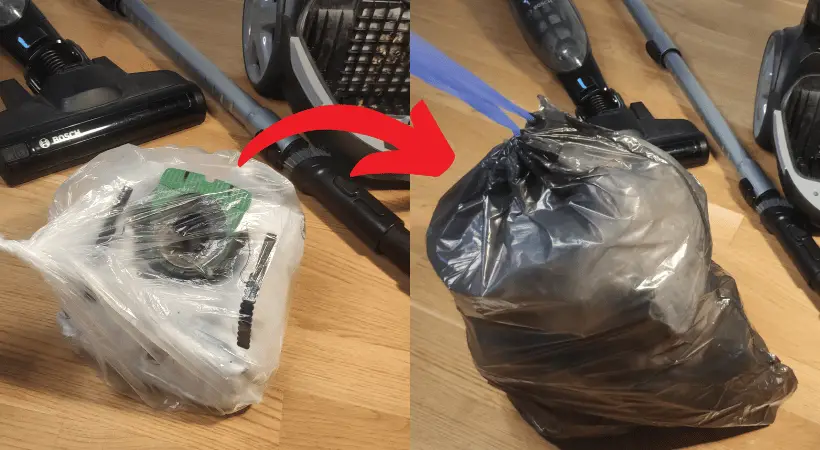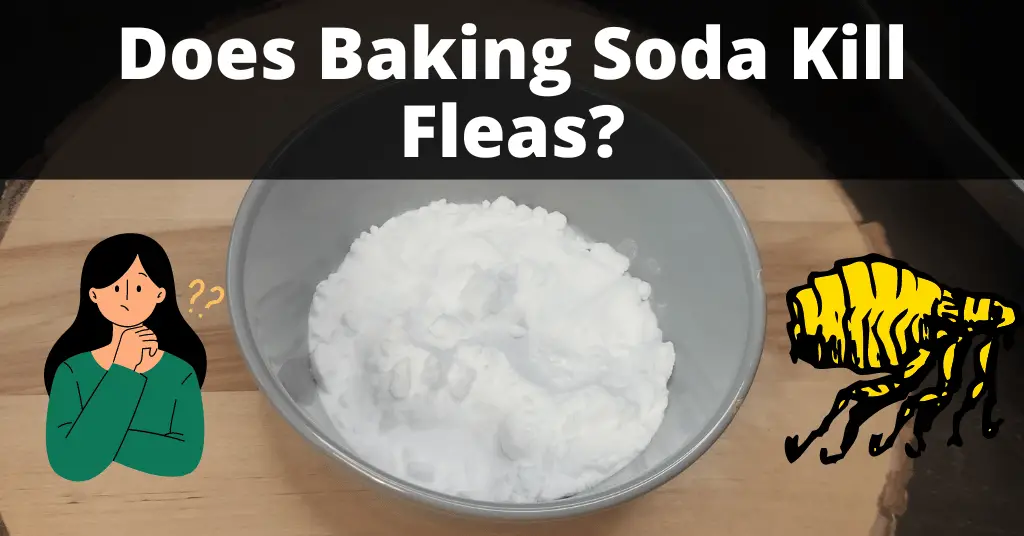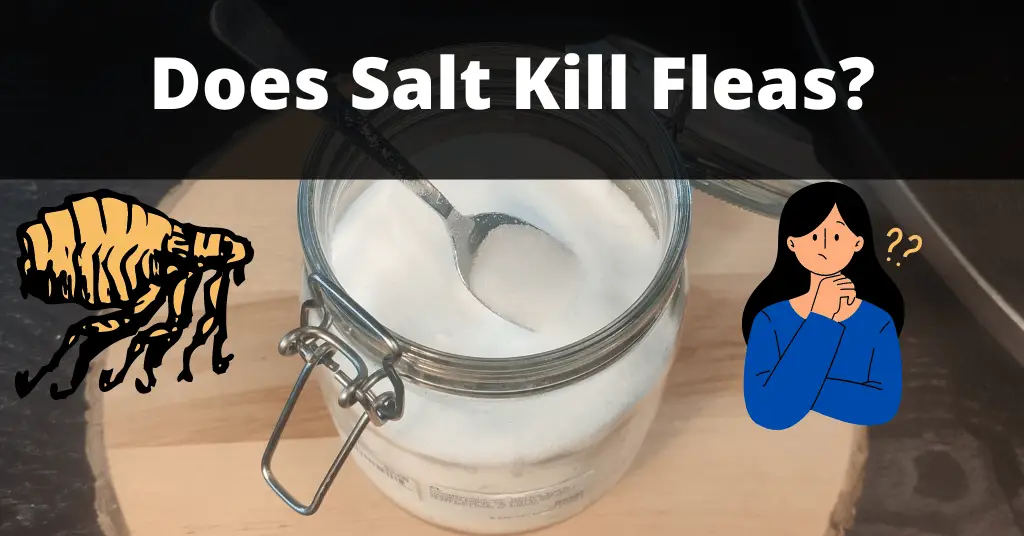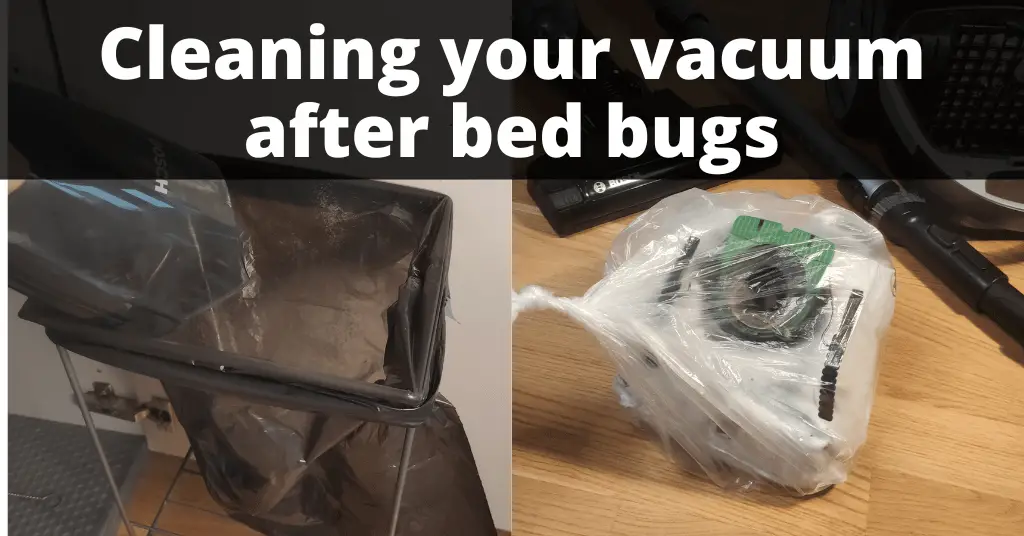Fleas are frustrating and can be a nightmare to any household if not approached correctly. Not only do they reproduce quickly and are hard to battle, but they also pose health risks to both humans and animals. These small pesky insects can transmit diseases and their bites can cause allergic reactions.
Because of all of this, it is crucial to act if you suspect fleas in your household. And home remedies such as baking soda can help you in the fight if used right!
There’s no proof that baking soda in itself is an effective flea killer, but there are sources that state their effectiveness when dehydrating fleas and their eggs. To create a deadly flea-killing combination, use baking soda together with salt. While baking soda may help dehydrate fleas by absorbing moisture from their bodies as well as deodorize the area, powdered salt will get attached to flea bodies, penetrate their exoskeleton while they move, and ultimately kill them. Not only will this mixture kill adult fleas, but it will also be effective against flea eggs and larvae that are often much harder to kill.
Follow along and learn how exactly this affordable method should be used to kill fleas.
Where would fleas without a host hide?
If a flea is dislodged from its host, it will quickly seek out another one otherwise it would die. Therefore before you begin, you should scan your household and take note of all the potential flea hotspots to treat them accordingly. So where would fleas without a host hide?
Outdoors, there are many places a flea could hide. They could sit in dense vegetation, under rocks as well as in sheds and pet houses in your yard.
Indoors, if fleas were to lose their host they will be located and lay eggs in areas where their host hangs out the most. So if you have an infected pet, give special attention to carpets, beds, bedding, crates, floor cracks, and any other favorite furniture of your pet.
Approach these hotspots in turns and do not allow your pets or children near while the flea treatment is in progress.
Treating potential fleas hosts
While you take measures to prevent fleas from growing in your house you should also make sure the potential flea hosts (both pets and people) are being treated to not carry and spread any new fleas around.
You’ll have to be rather active during this period while you fight fleas. Sanitation is crucial. Make sure you vacuum around regularly and wash bedding and clothing in hot water.
If you suspect that your pet has fleas, it is essential to seek treatment from a veterinarian as quickly as possible.
There are many products on the market that are effective against fleas, so be sure you do proper research, read the labels carefully and consult with pest control experts and veterinarians if needed before you start using one.
Using baking soda and salt to kill fleas naturally
If flea infestation is something you’ve already dealt with in the past, then you know how frustrating and challenging it can be to get rid of them for good. While there are a variety of commercial products available, many people prefer to opt for something more organic and get rid of fleas naturally.
The baking soda and salt duo is a perfect combination as it is safe to use around pets and children.
To prepare the solution, pour one part of the powdered salt and one part of the baking soda into a bowl and mix them together properly. Always use active baking soda (a new box of baking soda instead of the old one). Make sure that there are no lumps in the mixture.
You just made yourself an effective flea-killing combination. Distribute this around the places you suspect to find fleas.
Below we’ll provide you with step-by-step instructions on how to treat some of the fleas’ favorite hiding places by using baking soda and salt.
Treating the carpet
Baking soda and salt can kill fleas on the carpet, but it’s important to follow a few simple steps to ensure the best results.
To treat your carpet you will need:
● Powdered salt (flour salt)
● Active baking soda
● Vacuum cleaner
Step 1. Vacuum the carpet
To kill fleas on the carpet, start by taking the rug outside and vacuuming it thoroughly. For best results, utilize a beater bar in your vacuum if you have one. Powered brush rolls can improve the reach and grant you the most effective results. This will help to remove any fleas that are already present.
Step 2. Spread baking soda and salt mixture
Next, mix together equal parts of baking soda and salt. Spread the mixture on the carpet and use as much as necessary to cover the entire surface. Allow the mixture to sit for 5 – 10 days before vacuuming it again.
Step 3. Vacuum the baking soda and salt mixture thoroughly
After enough time has passed, vacuum the carpet thoroughly to remove the solution as well as the dead fleas. You can again take advantage of a beater bar if you own one.
Step 4. Repeat the process
To ensure the best results, repeat the entire process once or twice more to ensure any remaining or newly hatched fleas are approached.
Step 5. Remove the vacuum cleaner bag
Once done, take the vacuum cleaner bag out and throw it away. If you have a bagless vacuum, empty the content in a sealed plastic bag and clean the vacuum container with hot, soapy water. Here are our detailed steps on how to clean fleas with bagless vacuums.
You can also take a look at our article if you want to learn additional details when killing fleas in carpets.

Approaching cracks and crevices.
Another common place in your household where fleas may hide is inside cracks and crevices in the floor or walls.
To treat these areas you will need:
- Powdered salt (flour salt)
- Active baking soda
- Vacuum cleaner
To approach any suspected gaps or crevices, first, start by vacuuming them with a strong suction vacuum. Secondly, mix equal parts of baking soda and salt together and then pour the mixture into and around any gaps or crevices where you think fleas may be hiding.
Leave the solution for 3 – 5 days and afterward thoroughly vacuum it all up. Repeat the process 1 – 2 more times to ensure fleas in different life cycles have been exposed to the solution.
Treating furniture and pet beds.
Pet beds are yet another location where fleas will most likely be prominent. And if you allow your pets on some of the household furniture, chances are that you will find fleas there too.
To treat pet beds and household furniture you will need:
- Powdered salt (flour salt)
- Active baking soda
- Vacuum cleaner
- Vacuum cleaner upholstery attachments (optional)
First of all, make sure your pets and children are kept away from potentially infested furniture during the process.
Having that in mind, start by vacuuming upholstery, and using the attachments to get into crevices where fleas may be hiding. Pay special attention to favorite places for pets to rest. If possible, remove the furniture cover and wash it in the washing machine if the material is machine friendly.
Mix equal parts of baking soda and salt and pour the combination generously around the furniture. Let it be for 5 – 10 days and make sure the furniture is not being used in the meantime.
Once enough time passed, vacuum the baking soda and salt solution thoroughly. Finally, repeat the entire process 1 – 2 more times to get rid of any new fleas.
Spraying the yard.
If you have a flea problem in your yard, baking soda and salt can also be used effectively.
To treat your garden you will need:
- Powdered salt (flour salt)
- Active baking soda
- Water
- Gardening hose
Mix equal amounts of baking soda and salt together. Sprinkle it generously around the yard and let it stay for 5 – 10 days. Be sure to thoroughly cover any areas where fleas are known to congregate, such as around bushes or in shady spots. The fleas will die upon contact with the solution.
Finally, use a gardening hose to spray the area and dissolve the remains. Don’t forget to repeat the entire process 1 – 2 more times to battle fleas at their different life cycles and get rid of them for good.

Can you use baking soda and salt solution directly on your pet?
Yes, you can use a baking soda and salt solution on your pet to fight fleas. However, it is very important that you handle the process carefully – while you put enough focus on the back of the head and ears, you don’t want to get the ingredients into the eyes, nose, or mouth of your furry friend. If consumed, large quantities of salt and baking soda can be toxic to dogs and cats.
You can apply the solution in several ways:
- Making a baking soda and salt spray
- Using baking soda and salt as a dry pet shampoo
- Mixing salt and baking soda bath
If you are not confident about properly diluting the solution or how to apply it to your pet, it is best to consult with a veterinarian. They will be able to advise you on the best course of action for your specific situation.


